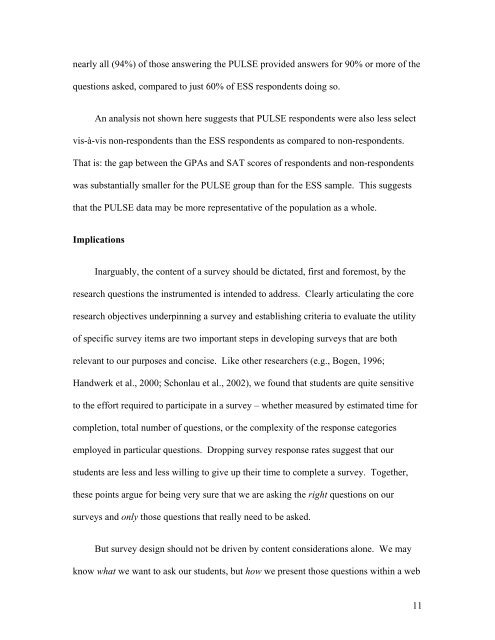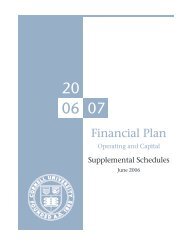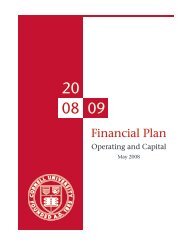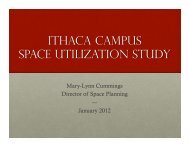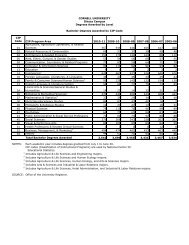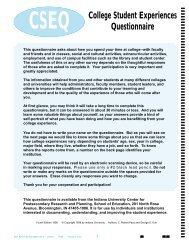Survey Design and Response Rates: - Cornell University Division of ...
Survey Design and Response Rates: - Cornell University Division of ...
Survey Design and Response Rates: - Cornell University Division of ...
You also want an ePaper? Increase the reach of your titles
YUMPU automatically turns print PDFs into web optimized ePapers that Google loves.
nearly all (94%) <strong>of</strong> those answering the PULSE provided answers for 90% or more <strong>of</strong> the<br />
questions asked, compared to just 60% <strong>of</strong> ESS respondents doing so.<br />
An analysis not shown here suggests that PULSE respondents were also less select<br />
vis-à-vis non-respondents than the ESS respondents as compared to non-respondents.<br />
That is: the gap between the GPAs <strong>and</strong> SAT scores <strong>of</strong> respondents <strong>and</strong> non-respondents<br />
was substantially smaller for the PULSE group than for the ESS sample. This suggests<br />
that the PULSE data may be more representative <strong>of</strong> the population as a whole.<br />
Implications<br />
Inarguably, the content <strong>of</strong> a survey should be dictated, first <strong>and</strong> foremost, by the<br />
research questions the instrumented is intended to address. Clearly articulating the core<br />
research objectives underpinning a survey <strong>and</strong> establishing criteria to evaluate the utility<br />
<strong>of</strong> specific survey items are two important steps in developing surveys that are both<br />
relevant to our purposes <strong>and</strong> concise. Like other researchers (e.g., Bogen, 1996;<br />
H<strong>and</strong>werk et al., 2000; Schonlau et al., 2002), we found that students are quite sensitive<br />
to the effort required to participate in a survey – whether measured by estimated time for<br />
completion, total number <strong>of</strong> questions, or the complexity <strong>of</strong> the response categories<br />
employed in particular questions. Dropping survey response rates suggest that our<br />
students are less <strong>and</strong> less willing to give up their time to complete a survey. Together,<br />
these points argue for being very sure that we are asking the right questions on our<br />
surveys <strong>and</strong> only those questions that really need to be asked.<br />
But survey design should not be driven by content considerations alone. We may<br />
know what we want to ask our students, but how we present those questions within a web<br />
11


